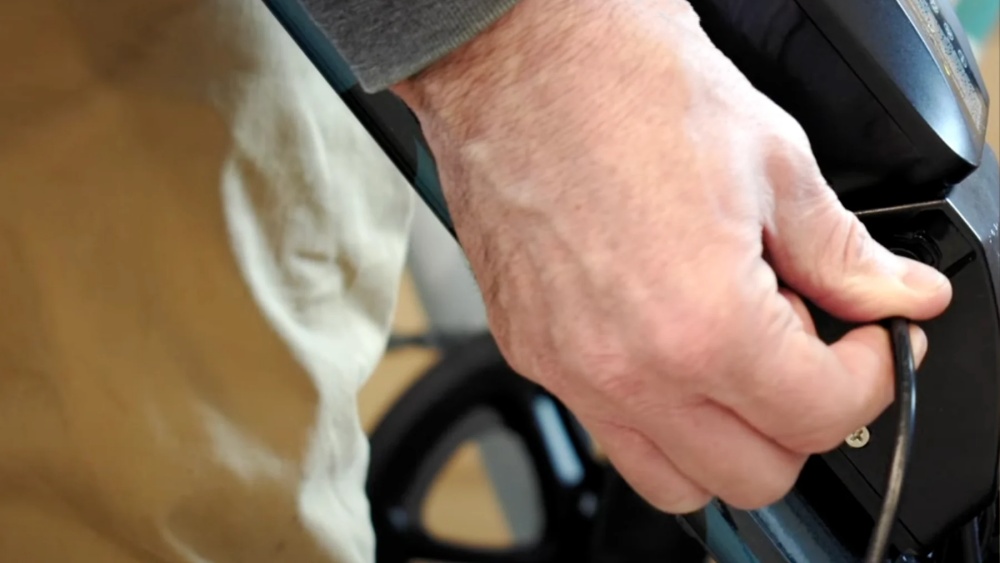E-bike battery catch fire, what we need to know to keep them safe
Why should you only use the manufacturer’s recommended charger for your e-bike?
Almost all e-bikes are powered by lithium-ion batteries. These batteries have a very high energy density, which makes e-bikes relatively lightweight but with a long range. Despite all the advantages of lithium-ion batteries, one of the major challenges to their safety is that if something goes wrong, the energy may be released in the form of a fire.
In New York, lithium-ion batteries started 121 fires between 1 January 2022 and 3 August 2022 Lithium-ion battery fires were the leading cause of fire-related deaths in 2022 in Vancouver. These reports indicate that the risk of battery fires has increased with the growing popularity of electric devices, including e-bikes. Statistically, lithium-ion batteries have a low failure rate and these batteries are not inherently dangerous. Nonetheless, even one failure is already one too many.
On the supplier side, Shuangye ensures that we use the highest quality materials in our batteries (e.g. LG/Samsung branded Li-Ion batteries). We also design batteries with multiple safety features such as overcharge, overdischarge, overcurrent, and temperature cutoff protection. Everyone at shuangye shares a core belief in the importance of educating our customers about possible hazards and the precautions they can take to ensure their safety.
The purpose of this article is to provide you with a helpful guide. As such, we will discuss tips for safely charging and storing lithium-ion batteries, as well as steps you can take if an emergency arises.
How to safely charge your e-bike battery
 Most reported battery fires are caused during the battery charging process. Therefore, consumers must take extra care when charging. Here are some tips on the proper charging process:
Most reported battery fires are caused during the battery charging process. Therefore, consumers must take extra care when charging. Here are some tips on the proper charging process:
Always use the manufacturer’s recommended charger; if you purchase an aftermarket charger, make sure it is UL listed and has the exact same specifications as the original charger. Using a fast charger with a non-fast charging battery can be dangerous.
Never place the battery near a source of high temperature, such as a heater. High temperatures can damage lithium-ion batteries and cause thermal runaway events.
Never place the charger or battery on or near flammable materials such as wood furniture or building structures. Always try to place the charger and battery on a fireproof surface or space.
Always keep the battery in sight when charging. As a further precaution, keep the smoke alarm close to the battery.
In the event of a fire, the first few seconds are critical as you can still extinguish the fire before it gets out of control; therefore, a quick response is vital.
Switch off the battery while charging.
As a rule of thumb, it is normal for the charger to get warm while charging, but the battery should never get warm (feel warm to the touch). If you think the battery is getting warm, disconnect it.
Never charge at temperatures below freezing as this may cause dendrites to grow on the lithium-ion battery, which can lead to a short circuit, which can cause a fire.
Charge in a well-ventilated area.
Do not leave the battery charged overnight.
Proper storage of lithium-ion batteries
Your e-bike’s lithium-ion battery needs to be stored properly, and there are steps you can take to ensure proper storage.
When storing the battery for an extended period of time, charge the battery to approximately 60%.
Avoid storing in extreme temperatures or high humidity.
Do not use dropped, punctured, crushed, or damaged batteries.
If a lithium-ion battery catches fire, extinguish it with a fire extinguisher (beware that such fires contain toxic fumes).
Avoid extinguishing lithium-ion battery fires with water. Although it is possible to extinguish a fire with water, a U.S. Department of Energy report found that it requires excessive amounts of water.
Do not store or charge batteries near individual exit points.
Safe Use of Lithium-Ion Batteries
If the battery begins to smoke, make unusual noises, or show signs of melting, stop using it immediately and place it in a safe place.
If you notice a drastic change in voltage/performance, stop using the battery.
If you drop the battery compartment/bike into water, have it checked by a professional before using the battery. (Moisture in the battery compartment indicates that water has penetrated the compartment and may cause a short circuit).
Always use the battery with the batteries supplied with the product; do not use it for any other purpose.
Emergency Response
For any e-bike owner, adhering to the tips in the previous section can reduce the likelihood of an emergency, but unfortunately, accidents do happen. Therefore, familiarise yourself with the measures you can take to ensure the safety of yourself, your loved ones or anyone around you.
In general, here are 3 steps you can take when a lithium-ion battery catches fire:
Use a fire extinguisher:
Depending on the size and type of battery, there are several ways to put out a lithium-ion battery fire. You need to react quickly and prevent the fire from spreading.
Since fires caused by lithium-ion batteries are classified as Class B fires, you should choose a standard ABC or dry powder extinguisher. the Class B classification is intended to differentiate between flammable liquids. Since lithium-ion batteries contain a liquid electrolyte, they fall into this category.
When burning, the toxic liquid acts as a conduit for the fire, helping it to spread faster.
You can use a fire extinguisher to spray the flames until the fire is extinguished. The stages are as follows:

Use the fire extinguisher by removing the safety pin.
Aim the nozzle at the base of the fire.
Squeeze the handle firmly
To ensure that you extinguish the flames completely and correctly, sweep the nozzle back and forth over its base.
Take the battery out of the building:
If you suspect a problem (e.g., the battery compartment is getting hot, fluid is leaking, or the battery is making a noise), you should place it outside in a safe, open space and wait for the battery to return to normal. Please note that you should not attempt to handle a battery that is on fire or leaking fluids as this could be dangerous to you.
If a battery catches fire, wait until all the batteries are burning and then try to extinguish them.
Call the fire service:
Lithium-ion battery fires are a type of thermal runaway event. Subsequent e-bike battery fires can cause a variety of hazards such as toxic smoke, flames and metal projectiles. After taking the necessary steps listed above, if the fire cannot be contained, call the nearest fire service in your area.
Judge the severity of the situation and do not approach a burning battery. If you are not willing to deal with the fire, wait until the firefighters arrive.
What are the safety features of Shuangye lithium e-bike batteries?
To ensure that our products meet your highest quality and safety expectations, shuangye sought and obtained Canada’s first UL certification for e-bikes.
Recent advances in BMS (Battery Management Systems) allow for better control of an e-bike’s battery pack from a number of perspectives, such as the operation of the battery and its charging and discharging. shuangye’s ultimate goal is to optimise battery performance and life.
While we make sure to provide e-bike batteries that exceed industry standards, here are some of the safety features of Shuangye batteries.
Charge Protection (Voltage and Current)
Shuangye batteries will cut off charging if the charging voltage or current is higher than the specified range; this ensures that charging is stopped in the event of any malfunction.
Battery Balancing
Battery balancing Increases the usable capacity of the battery; moreover, an unbalanced battery can be damaged and lead to malfunctions in the long run.
This is why Shuangye batteries are equipped with a battery balancing and a battery balancing cut-off function. This way, if one of the cells is permanently damaged and cannot be balanced, the battery shuts down.
Discharge protection (voltage and current)
Voltage and current values are measured during product operation; if the voltage is too low or the current value is too high, the BMS will cut off the battery for safety reasons.
Short circuit protection
A short circuit in a lithium-ion battery is always dangerous. It can damage your battery and shorten its life cycle. In the worst case, a short circuit can lead to serious risks, such as fire or explosion of the lithium-ion battery, resulting in personal injury, property damage, or even death.
Shuangye batteries have a short circuit protection feature designed to monitor battery voltage to prevent dangerous situations caused by short circuiting the battery.
Temperature cut-off protection
Shuangye lithium-ion batteries include a temperature cut-off protection mechanism that shuts down the battery when the temperature value exceeds a safe limit.
Conclusion
Today, lithium-ion batteries are widely used in electric bicycles. Although these batteries are not inherently dangerous, improper handling by some e-bike users has led to many fire accidents.
Fill in the information below now and let our well-designed City Electric Bike and quality outdoor accessories take you on a journey to explore nature and unleash your passion for unlimited adventure!
 shuangye outdoor products
shuangye outdoor products
